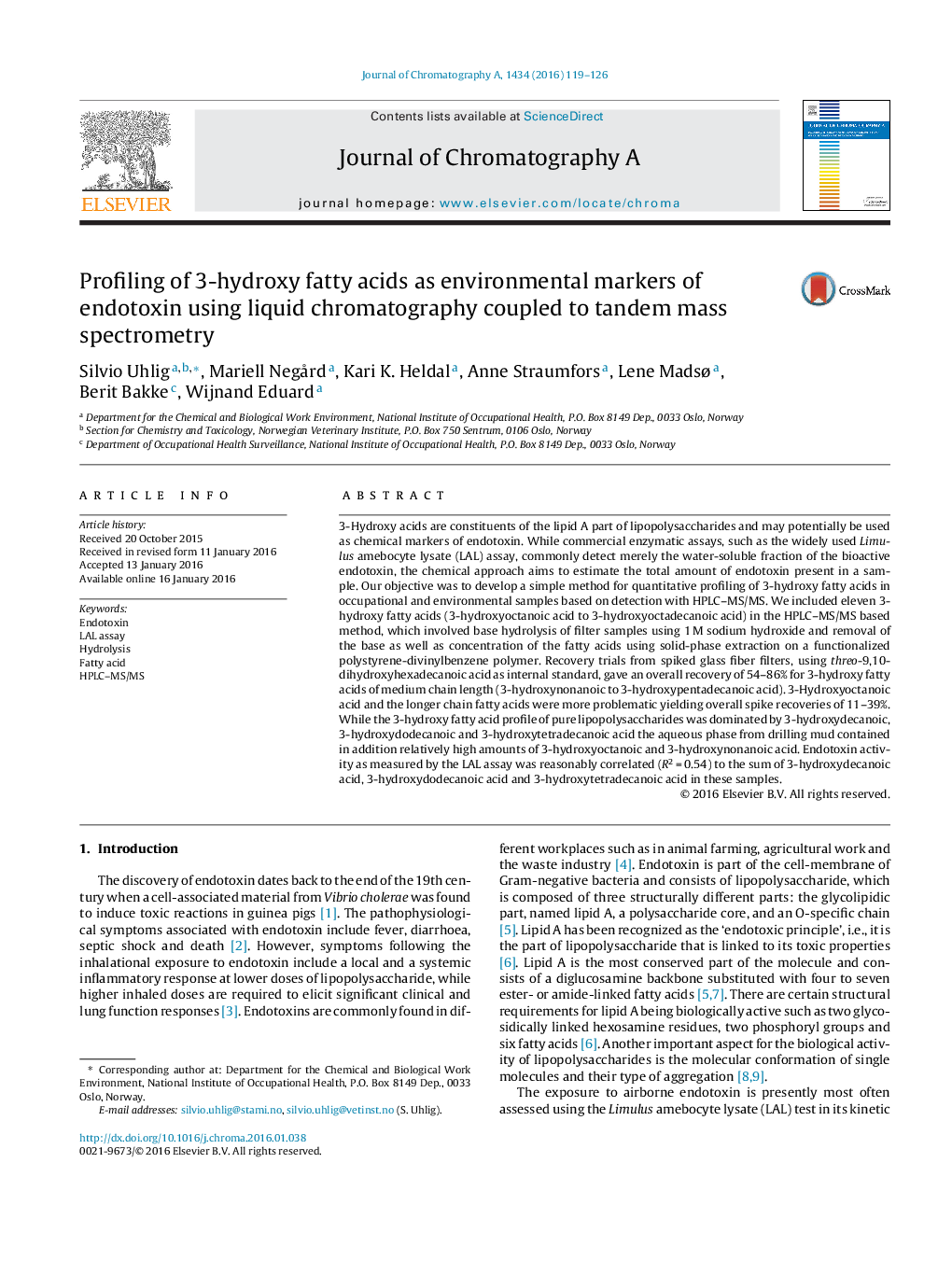| کد مقاله | کد نشریه | سال انتشار | مقاله انگلیسی | نسخه تمام متن |
|---|---|---|---|---|
| 1198977 | 1493492 | 2016 | 8 صفحه PDF | دانلود رایگان |
• Lipopolysaccharide-related 3-hydroxy fatty acids are profiled using HPLC–MS/MS.
• The method consists of base hydrolysis, solid-phase extraction and instrumental analysis.
• The method is applied to commercial lipopolysaccharide and samples from the waste industry.
• The sum of 3-hydroxy fatty acid concentrations is poorly correlated to endotoxin activity.
3-Hydroxy acids are constituents of the lipid A part of lipopolysaccharides and may potentially be used as chemical markers of endotoxin. While commercial enzymatic assays, such as the widely used Limulus amebocyte lysate (LAL) assay, commonly detect merely the water-soluble fraction of the bioactive endotoxin, the chemical approach aims to estimate the total amount of endotoxin present in a sample. Our objective was to develop a simple method for quantitative profiling of 3-hydroxy fatty acids in occupational and environmental samples based on detection with HPLC–MS/MS. We included eleven 3-hydroxy fatty acids (3-hydroxyoctanoic acid to 3-hydroxyoctadecanoic acid) in the HPLC–MS/MS based method, which involved base hydrolysis of filter samples using 1 M sodium hydroxide and removal of the base as well as concentration of the fatty acids using solid-phase extraction on a functionalized polystyrene-divinylbenzene polymer. Recovery trials from spiked glass fiber filters, using threo-9,10-dihydroxyhexadecanoic acid as internal standard, gave an overall recovery of 54–86% for 3-hydroxy fatty acids of medium chain length (3-hydroxynonanoic to 3-hydroxypentadecanoic acid). 3-Hydroxyoctanoic acid and the longer chain fatty acids were more problematic yielding overall spike recoveries of 11–39%. While the 3-hydroxy fatty acid profile of pure lipopolysaccharides was dominated by 3-hydroxydecanoic, 3-hydroxydodecanoic and 3-hydroxytetradecanoic acid the aqueous phase from drilling mud contained in addition relatively high amounts of 3-hydroxyoctanoic and 3-hydroxynonanoic acid. Endotoxin activity as measured by the LAL assay was reasonably correlated (R2 = 0.54) to the sum of 3-hydroxydecanoic acid, 3-hydroxydodecanoic acid and 3-hydroxytetradecanoic acid in these samples.
Journal: Journal of Chromatography A - Volume 1434, 19 February 2016, Pages 119–126
